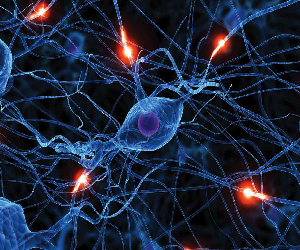Science project has a common structure that has to be followed to present the report of the valuable information. The objective of the science project sample has to be the solution to the significant problem while the author has to suggest the possible directions for the further development of the topic. The descriptive data analysis has to be supported by the references to the scholarly sources.
 The science project is the activity that requires a clear statement of the problem and the proposed solution to it. The objective of the science project can be different – the one can conduct the science project to confirm the existing information, or to explore the subject from the alternative point of view to discover something new. However, each science project has the same structure, which includes the following components: problem identification, solution proposal, development of the action plan, and analysis of the obtained data.
The science project is the activity that requires a clear statement of the problem and the proposed solution to it. The objective of the science project can be different – the one can conduct the science project to confirm the existing information, or to explore the subject from the alternative point of view to discover something new. However, each science project has the same structure, which includes the following components: problem identification, solution proposal, development of the action plan, and analysis of the obtained data.
When one starts the science project, it is important to state the objective first. For example, TV commercials always talk about the different batteries and their efficiency. The researcher might examine which batteries do last longer than others. To solve the problem, the author of the work might propose to test different types of batteries using three devices, which are responsible for the various drain speeds. Low, medium, and high drain devices can be utilized to conduct the research. Hence, there also have to be the dependent and independent variables in the research. For example, different time intervals can serve as an independent variable while measuring battery voltage would be the dependent one. Hence, the project must be driven by the working hypothesis so that for this particular example the hypothesis might be that Energizer batteries are the longest lasting batteries in all devices. The experiment might confirm or reject the working hypothesis by showing the results of the test. Moreover, the additional results might be obtained. For example, some batteries could not last long while they have to be better than others in the long-term perspective. However, the analysis of the data can be performed by utilizing the different strategies. Some graphs might also illustrate results so that the science project will be more academic. Finally, the project report has to be written to demonstrate all results while the further discussion has to be presented. Limitations and suggestions have to be written after all so that other researchers might use your data to emphasize the further development of this project. The educational science project usually has at least five academic references to support the discussion. On the other side, the theoretical science project might be constructed on the review of different scholarly sources but the numbers of these sources that has to be used is more than twenty.
To summarize the issue, it should be mentioned that the structure of the science project is almost the same in each case. However, it is important to offer the solution to the significant problem, which will serve as the scope of the whole project. The hypothesis has to predict the outcome of the project. An action plan has to be developed to obtain data, which might confirm or reject the working hypothesis. The further discussion of results is essential as well as the use of the references in an academic science project.
References
- Driver, R. (1985). Children’s ideas in science. UK: McGraw-Hill Education.
- Driver, R., & Easley, J. (1978). Pupils and paradigms: A review of literature related to
concept development in adolescent science students. Studies in Science Education
5: 61-84. - Driver, R., & Oldham, V. (1986). A constructivist approach to curriculum development
in science. Studies in Science Education 13.1: 105-122. - Magnusson, S., Krajcik, J., & Borko, H. (1999). Nature, sources, and development of
pedagogical content knowledge for science teaching. Examining pedagogical
content knowledge n.d.: 95-132. - Peffers, K., Tuunanen, T., Rothenberger, M. A., & Chatterjee, S. (2007). A design science
research methodology for information systems research. Journal of Management
Information Systems 24.3: 45-77.